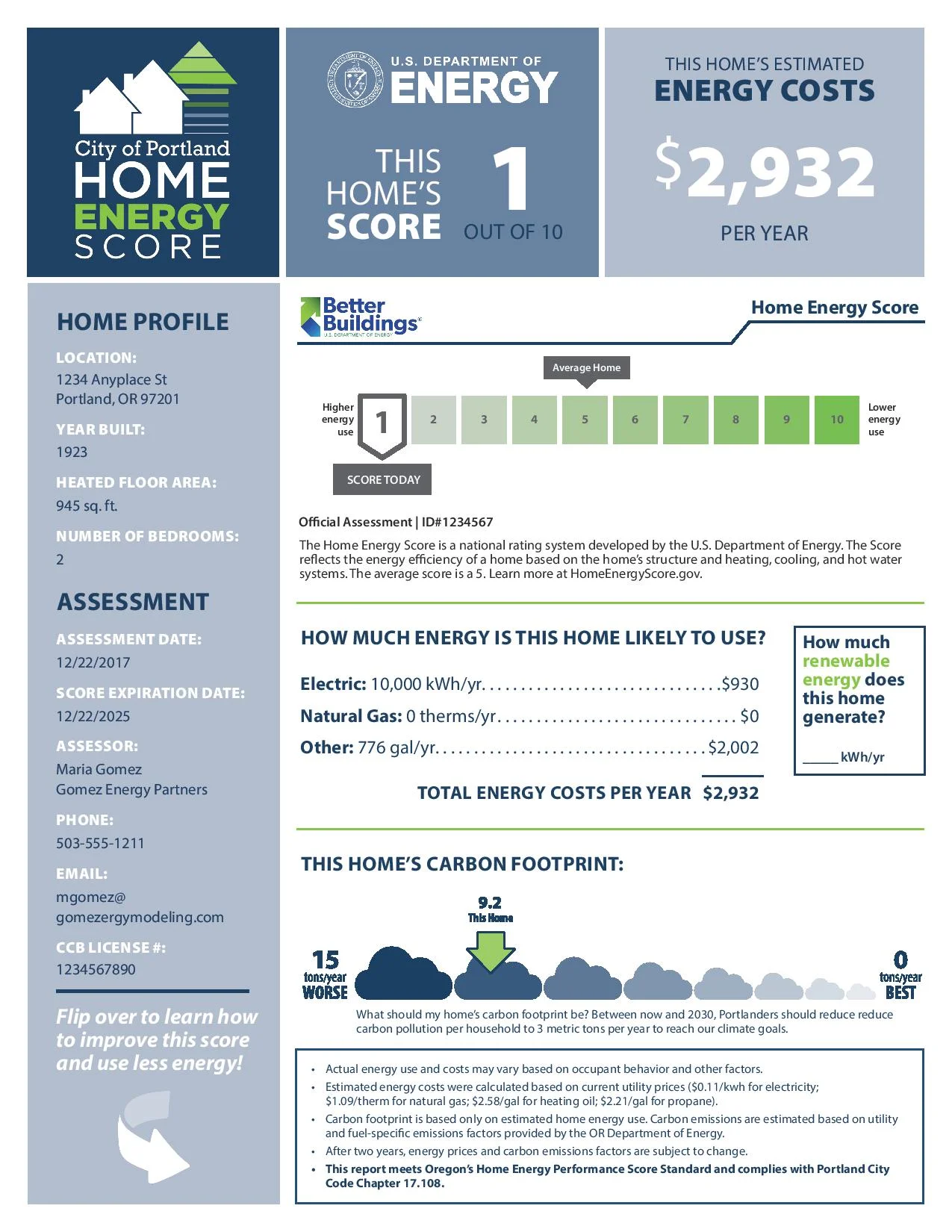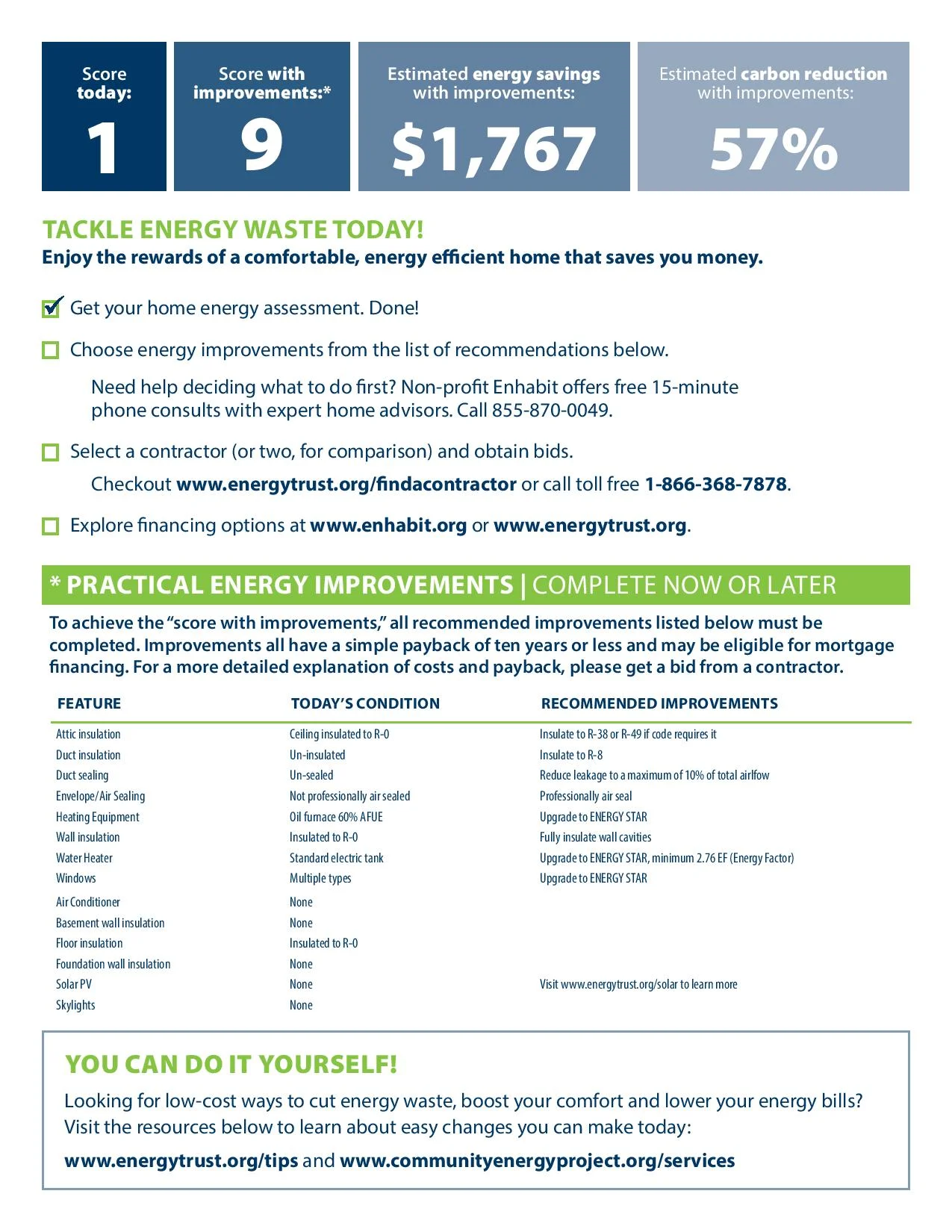After we complete your Home Energy Assessment, we enter all of your home's data into an online modeling tool which produces the Home Energy Report. For existing homes the report is 2 pages and for new homes the report is 1 page. In this blog post, we will help you understand how to read your report.
Page 1
At the top left of the first page, you will see the City of Portland Home Energy Score logo. At the center is the U.S. Department of Energy logo because they developed the scoring system. Your home's score is just below the U.S. DOE logo. At the top right is the your home's estimated annual energy costs. This top bar is a quick reference point to go back to for simple numbers.
Along the left side is a bar which includes the basic details of your home: address, year built, square footage and number of bedrooms. It also includes the assessment date, assessor contact information and the score's expiration date. *Note that the score expires in 8 years but the report expires in 2 years to take into account weather and utility rate changes. You can download a new report within the 8 year period for free from the Green Building Registry. If you make any energy upgrades to your home, you will need a new score regardless of when your existing score expires. And you will want to! Energy upgrades will likely increase your home's score, especially if you choose to make more than one improvement.
The remainder of page 1 includes the Home Energy Score scale, energy use breakdown and carbon footprint scale.
- The Home Energy Score scale indicates where your home is at today compared to the average reference home scoring a 5. Homes with lower scores are not poorly built, they were likely built at a time before code required insulation and high performing heating systems so they have more room for improvement than today's code built homes. Don't be surprised if your beautiful 1920's home receives a 1!
- The next section outlines the estimated annual energy use by fuel type; electricity, natural gas and other. These numbers are helpful to homebuyers so they can get an idea of what it will cost to operate their new home. This cost may vary due to occupant behavior just like a car's MPG. It also showcases renewable energy production that will help offset the utility cost.
- The last section shows where your home is at in regard to its carbon footprint based on estimated energy use. Part of the reason for the Home Energy Score requirement is to help Portland with its climate action goals.
Page 2
The second page is designed for existing homes because it offers suggestions for improving your score. Home improvements are not required to sell your home but could help increase its value. New homes will not have a second page because they are built to current energy code.
Once again, the top bar is a quick reference point to go back to for simple numbers. It shows your home's score today, score with all improvements, estimated annual energy savings with improvements and percentage of estimated carbon reduction.
The next section is a checklist if you would like to move forward with energy improvements. Congrats on checking off the first step! Enerstructa LLC does not install energy upgrades but can refer you to local contractors. We are also happy to talk with you to narrow down which improvements to choose first and which to do down the road. Financing options for improvements are available as well.
The following section lists the home's features we evaluated during the assessment, their current condition and recommended improvements. Keep in mind that the listed improvements must have a 10 year or less payback time. Other upgrades may improve the home's energy efficiency but are outside of that payback period.
Lastly, if you are a handy person like me, the report lists resources to learn more about how to do it yourself. As an Energy Trust of Oregon Trade Ally and having worked for the Community Energy Project, I highly recommend you check them out!



